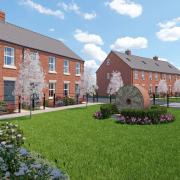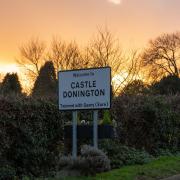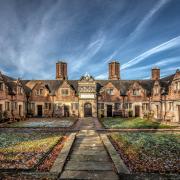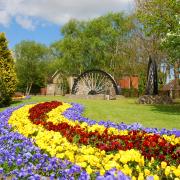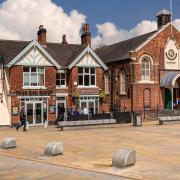Nine Ladies Stone Circle and other ancient sites

The above reads like the beginning of a real nursery rhyme, you may even recall it from your childhood and link it to stone circles. I remember it from mine, but I’ll tell you why - it gave me nightmares as it is a relatively modern rhyme written by Nigel Kneale for the 1979 science fiction series Quatermass starring John Mills. The plot centred around stone circles and the fictional Ringstone Round.
My parents let me watch it aged eleven, times were different then, no watershed as it were. I got scared but it sparked an interest in stone circles that I still have today. It was repeated recently on television and I hungrily devoured every episode once again, forty years after it was first shown. It became the highlight of my TV week; the rhyme came back to me. The finer plot details that I didn’t understand as a child were clearer as an adult.
After I’d watched the last episode of the repeats, it made me think of similar sites local to me in Derbyshire that I’d visited in the past. Nine ladies in the eighties and Arbor Low in the early noughties. The first as a teenager with my parents, possibly only a few years after originally watching Quatermass, the second one as an adult. I don’t think any photographs of these visits still exist, both would have been taken on film. In the years since I’ve also visited Callanish stone circle on the Isle of Lewis, Stenness in The Orkneys and Stonehenge, of course.
No one can truthfully say why stone circles were built, some are closely aligned to the night sky, possibly built as early places of worship, possibly even for social gatherings where locals and travellers could meet. Some may have been built for prestige, in the way we strive to own large and expensive houses.

I thought the two stone circles in Derbyshire would make a great family day out as my wife has started using her phone to record her walks and enjoys a good ramble - and anything to get our son Ben off his computer.
I managed to get him to agree to accompany us, a rare occurrence by tempting him, with both stone circles that piqued his interest and the use of my spare camera.
The first we visited was Arbor Low near Bakewell. It is situated just a short walk off Long Rake, there is a small parking area on the lane leading up to Upper Oldhams Farm where the access to Arbor Low is through a working farmyard. If you do visit, take some change with you, a small charge of £1 per adult is requested.
Arbor Low is a major prehistoric site with the Barrow (mound) and ditch being created first during the Neolithic period (c4500 BC to c2500 BC) the stones are believed to been added later during the Bronze age, possibly around 2000 BC. it is sometimes called The Stonehenge of the North (even though many of us Derbyshire folk count ourselves as being from the East Midlands). The Barrow is in a horseshoe arrangement with the entrance being through the gap at the bottom of the shape.

You can gain access right up to the giant limestone blocks, something you obviously can’t do at Stonehenge. It is believed that the rocks were once upright and not placed lying down. Flat stone circles do exist and are called Recumbent Circles, but the general consensus is that Arbor Low was toppled in the early days of Christianity to destroy its symbolism. It consists of fifty stones although experts believe it originally consisted of around forty stones and some have been broken up since to make the fifty now seen.
The larger ones near the entrance to the circle are three metres long so would have stood around eight to ten feet high allowing for some of the stone set into a shallow footing - over half as tall as Stonehenge’s thirteen feet. Whilst still impressive today, I stood quietly and tried to imagine the stones upright in their original positions and the limestone freshly quarried. In my mind I was back 4,000 years, amongst the tall upright stones. Afterwards we walked up the bank and studied the circle from above. In the centre of the circle are smaller stones that possibly made a small stone box or cove.
Whilst not crowded, there was a steady flow of visitors to the site. We walked across from Arbor Low to Gib Hill, a burial mound situated 300 metres away. It was first excavated in 1812 then later in 1824 and 1848. In 1848 a cist or burial chamber was found with cremated human remains and a Neolithic food bowl.

READ MORE: Cycling the Peak District - Arbor Low to the Bull Ring
We made our way back to the farm and down the lane back to the car, a total circular walk of about a mile and I punched in the postcode for Nine Ladies Stone Circle eight miles away.
Nine Ladies, while smaller, is more what you might expect of a stone circle as all the stones while smaller are still upright; there is plenty of parking on the lane running past the moors it is situated on. The moors I suspect attracts wild campers, the odd tent was still there, we didn’t though knock on any tent flaps to find out if they were currently occupied, camping there is illegal, but I don’t think I’d fancy camping out there myself anyway.

Quite a few families were having picnics there, it did seem to attract more visitors than Arbor Low did.
Nine Ladies is around a mile off the road with a well-worn path leading the way, an information board is in place at the site. Apparently it was once believed that the stones were young ladies that were turned to stone for dancing on the Sabbath along with the fiddler who, according to legend, became the King stone forty metres away in a west-south-west direction from the main circle, However I’m not entirely convinced the story is true.
Despite its name there are ten stones. The tenth stone was discovered in 1977 lying flat. The circle is around eleven metres in diameter. The first reference to the circle was in 1782 by Major Hayman Rooke, a retired soldier who became an Antiquarian and pioneering archaeologist living at the time in Mansfield Woodhouse.
Carved on the King stone is the name Bill Stumps which may be some Victorian graffiti relating to Dickens’ ‘Pickwick Papers’ which mentions a marker stone with the same name on it.
Whilst out and about in the peaks we decided to visit another ancient site, not a stone circle but a burial mound named with fabulous alliteration - Hob Hurst’s House.
READ MORE: Peak District Walk - Ashford-in-the-Water
A Hob is a local name for a sprite, goblin or malicious spirit and Hurst means mound or hillock, so the name means goblin of the mound house I presume. It is situated around a mile and a quarter off the B5057 near Beeley. An uphill stony walk but the beautiful panoramic views of the surrounding moors are well worth the effort. The mound is surrounded by a ditch and during the summer is covered by a thick carpet of heather. It is believed the stones were a burial chamber, a layer of charcoal along with a collection of burnt bones was discovered when it was first excavated by Thomas Bateman in 1853, indicating a cremation site. Most of the ancient sites in Derbyshire relate to Neolithic and Bronze ages, but due to Hob Hurst’s unusual design some experts have placed it later, in the Iron age, around 800 BC.
The stones make up a ruined chamber around 3.5 by two metres, a wire fence with a stile to gain access surround the mound and again a few walkers were also visiting the site taking advantage of the clement weather.
All of the sites we visited are classed as open during daylight hours, Nine Ladies and Hob Hurst’s house could be visited at night and would be particularly atmospheric at dusk. I excluded Arbor Low to be courteous due to access being required through the farmyard.
My favourite of the three places we visited? I haven’t got one. They all have a uniqueness, the grand scale of Arbor Low, the perfect example of a stone circle at Nine Ladies and the breath-taking views from Hob Hurst’s House, and I’m still loving that alliteration.
Discover more Derbyshire stories and images through our Facebook, Twitter and Instagram accounts.
















